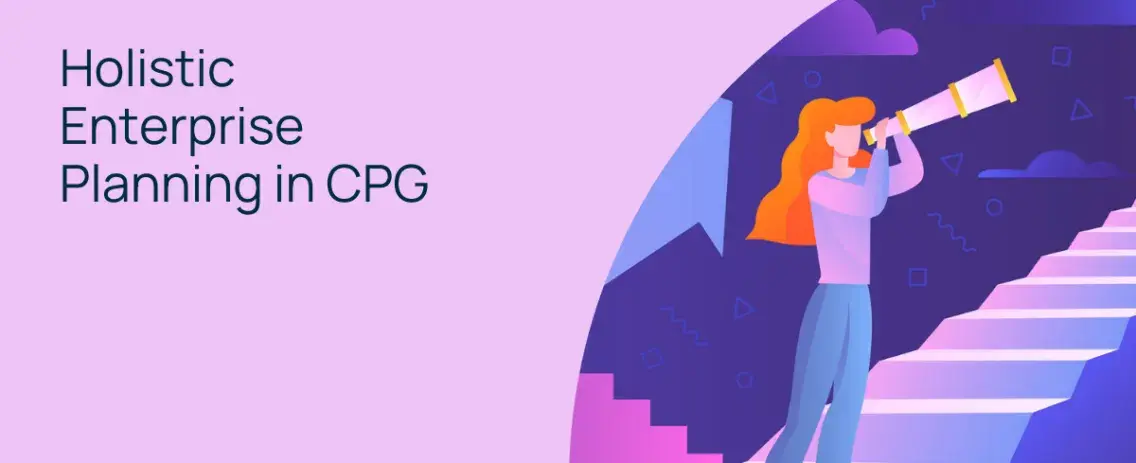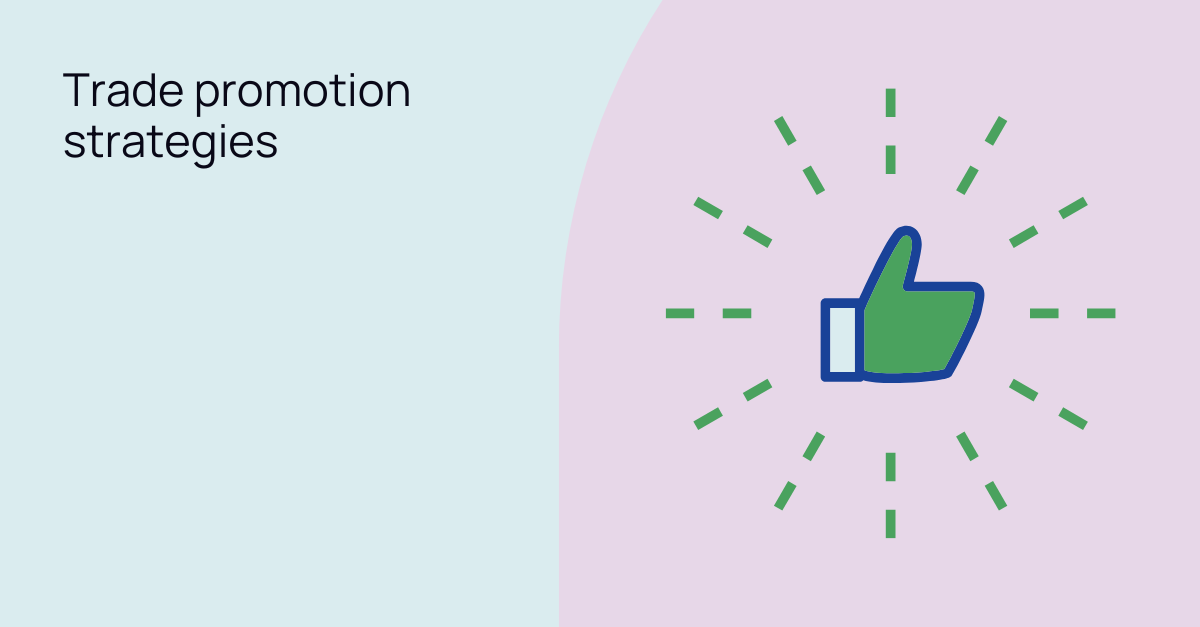
Holistic Enterprise Planning in Consumer packaged goods
The higher you go, the further you should be able to see. But time horizons in the consumer packaged goods industry can be highly compressed, with some functional or brand teams forced into a short term, reactive mode rather than thinking beyond next year, or even next quarter.
However, those entrusted with safeguarding the success of the company in the long term, by delivering steady and sustainable growth, must try and see years ahead.
They need to ensure the individuals and teams focused on specific tasks such as trade promotion management, forecasting or marketing all have the tools – and data – they need to do their job.
But they also need to be certain that the information coming out of those teams is accurate and reliable. And they need to understand how all those tactical activities contribute to growth and strategic development overall, both in the short term and over the longer term.
Striking that balance is the object of holistic enterprise planning (EPx) in the CPG industry. This assumes the free flow of data throughout the organization, with everyone working on the same view of the truth, and a high degree of automation enabling greater efficiency throughout the business.
In this blog we’ll examine the impediments to this approach and map out the path to true holistic enterprise planning.

The challenges addressed by holistic enterprise planning
Before senior management can think about holistic enterprise planning there are a myriad of hurdles that must be overcome. To a large extent, these are the same problems that prevent teams operating as efficiently as they can at a purely tactical level.
For example, sales, finance and demand teams are often bogged down in manual tasks. Does revenue or demand planning mean pulling data manually? Does constructing an annual operating plan (AOP) mean pouring data into hand-tooled spreadsheets?
This all shrinks the amount of time and mental bandwidth teams can apply to problem solving or innovation – and raises the specter of simple mistakes which can have catastrophic results.
This reliance on manual tasks also makes it harder to address inefficiency at multiple levels in the business whether that is in supply chain processes, cost management, or pricing strategy. And firefighting across all these areas distracts teams from making more accurate volume forecasts or strengthening relationships with customers.
Related to all of these challenges is the question of visibility. When information is manually compiled and held in siloed applications, it tends to stay there.
This paralyses process improvement, whether that’s consolidating and sharing insight and learnings from different teams or establishing meaningful monthly review meetings. Assessing trade promotion management (TPx) and Retail Execution (RetX) becomes difficult, if not impossible.
Siloed, unconnected data also means live dashboards and updated reports become difficult to achieve. This further undermines collaboration, and makes it hard for senior management to grasp what is really happening at a tactical level.
That is why having a single version of the truth is critical, with well-founded baselines, which in turn lay the groundwork for more accurate forecasts. When accurate reporting is brought into mix, CPG companies can gain a true picture of the progress or their promotions or other activities and optimize accordingly.
If this is then combined with well-founded artificial intelligence, companies can move to another level.

A journey to improve efficiency and effectiveness
So what does this journey look like?
Trade promotion management and trade promotion optimization are areas that can quicky benefit from a more joined up approach. Simply automating data collection and integration frees up professionals to focus on planning and more accurate trade promotion forecasting, meaning they are better prepared for negotiations with retailers.
But the use of AI opens up the possibility of not just more accurate forecasts, but the ability to model entirely new promotion strategies, and optimize plans right at the start of the planning and implementation process.
Potential uplifts can be better predicted, as well as ROI, both at a category level, and at a department or companywide level, thanks to standardized, fact-based calculations.
This means trade promotion teams can present their retail partners with multiple scenarios and programs, and their likely impact, making a long-term win-win approach far more viable.
And because all departments, and categories, are working on a single version of the truth, outlooks and models for the entire organization are improved.
With a view of all the relevant functions, and access to AI-led planning, senior executives can begin to drive optimization across commercial teams, taking a more strategic approach to growth.
This sets the stage for revenue growth management in CPG, where integrated data and shared insights allow companies to better balance their various functions – promotions, assortment, trade investment – and guide sustainable revenue growth from one year to the next.
The next strategic evolution – holistic enterprise planning
But the ultimate benefit from these actions comes from the ability to help top executives steer the company over the long term. That’s because it opens up the possibility of truly holistic enterprise planning, or EPx.
This is where all the work done in increasing automation, tuning workflows, and ensuring seamless integration and sharing of data and insights, really begins to pay off.
If they are sure their teams have the right tools, combined with trusted AI and machine learning algorithms, C-level executives can be confident about the actions their teams are taking – and the results they are seeing.
When the organization is working to a single source of truth, the headline dashboards the C-suite relies on become more meaningful, but also more actionable. The top line view becomes a portal from which they can drill right down to regional operations, individual promotions, or a specific retail partner. If necessary.
But they can also carry out their own modelling and optimization, taking into account not just short-term factors or uplifts, but longer-term opportunities and risks. So, instead of spending half their workday trying to figure out whether the numbers they see are really true, they can contemplate what the numbers mean in terms of future actions and directions.
This means C-level executives are better able to articulate their strategic objectives over years long timescales and to plot the steps they can take to reach them. And that benefits everyone.
Takeaways
By enabling CPG organizations to work with a common truth as well as cutting edge AI, Visualfabriq changes the question from “is this correct?” to “how can I make this better?”
What begins with automation and optimization of key pillars such as trade promotion and revenue forecasting, lays the groundwork for revenue generation management, and ultimately holistic enterprise planning.
To see how Visualfabriq can help your organization make this journey to a more sustainable future, get in contact today and arrange a briefing.
Visualfabriq has proudly achieved best-in-class distinctions in Enterprise Planning Integrated Business Planning (IBP) S&OP Capabilities, recognized by POI.

.png)

